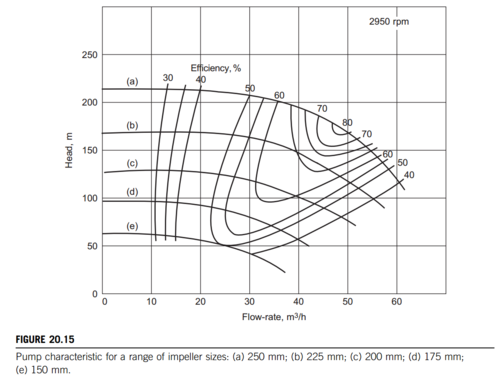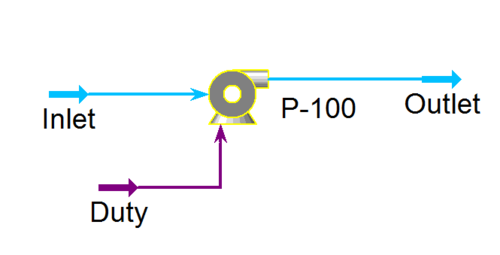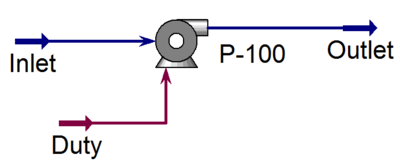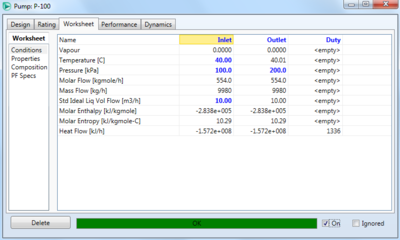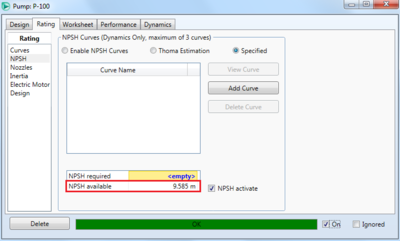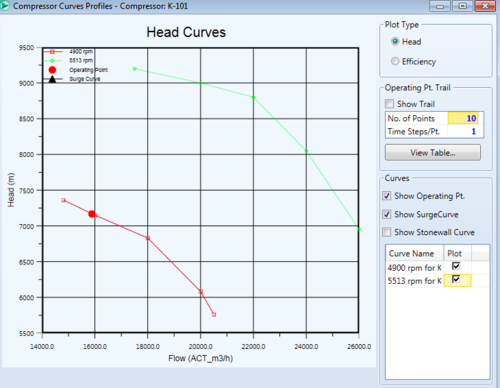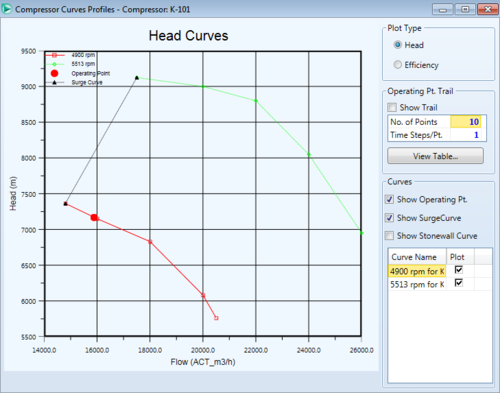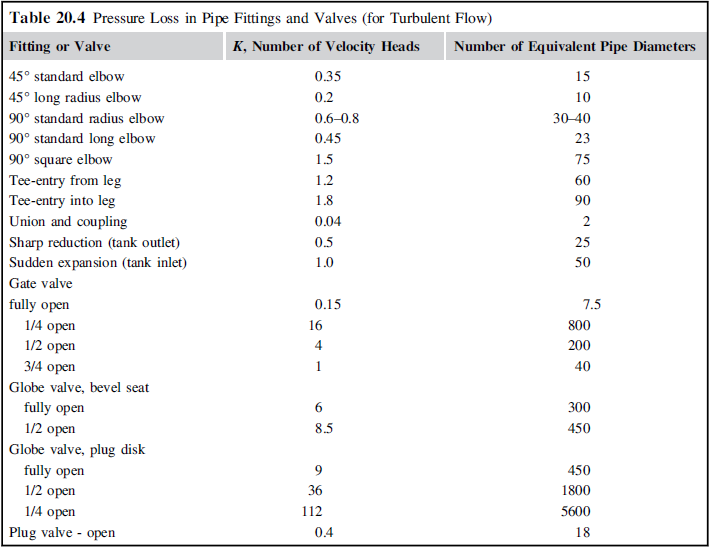Pressure changer: Difference between revisions
Kedricdaly2 (talk | contribs) m (Added source) |
Kedricdaly2 (talk | contribs) m (Updated "date presented" to final due date) |
||
| (17 intermediate revisions by the same user not shown) | |||
| Line 3: | Line 3: | ||
Stewards: David Garcia, Fengqi You | Stewards: David Garcia, Fengqi You | ||
Date Presented: February | Date Presented: February 21, 2016 | ||
<!-- Table of Contents --> | <!-- Table of Contents --> | ||
| Line 9: | Line 9: | ||
=Introduction= | =Introduction= | ||
Pressure changers are any piece of equipment where the main goal is to increase or decrease the pressure of a stream. Typically, pressure changers are used mostly for increasing pressure, due to the fact that pressure losses occur within a system due to friction with pipes, pipe bends, valves, and other pieces of equipment <ref name="Towler">G.P. Towler, R. Sinnott | Pressure changers are any piece of equipment where the main goal is to increase or decrease the pressure of a stream. Typically, pressure changers are used mostly for increasing pressure, due to the fact that pressure losses occur within a system due to friction with pipes, pipe bends, valves, and other pieces of equipment <ref name="Towler">G.P. Towler, R. Sinnott. Chemical Engineering Design: Principles, Practice and Economics of Plant and Process Design. Elsevier, 2012.</ref>. Lowering the pressure of a system can also be useful however, such as to favor the products of a chemical reaction through Le Chatelier's principle. It is important however to ensure proper pressure is maintained throughout a chemical process so that blowback does not occur, and any fluids actually reach their destination as expected, at the proper conditions. | ||
<br><br> | <br><br> | ||
There are many different types of modeling software for chemical processing, Aspen HYSYS, and Aspen Plus being well known. Like any piece of process equipment, it is necessary to specify a number of independent variables in order for the simulation to converge and produce unknown values. There are different combinations of independent variables that will suffice and cause the model to converge. Different parameters of the pump or compressor can also be specified, such as efficiency, which will impact the results of the simulation. It is therefore important to ensure the equipment is correctly specified to ensure accurate results. | There are many different types of modeling software for chemical processing, Aspen HYSYS, and Aspen Plus being well known. Like any piece of process equipment, it is necessary to specify a number of independent variables in order for the simulation to converge and produce unknown values. There are different combinations of independent variables that will suffice and cause the model to converge. Typically, the inlet and outlet pressures are specified (pressure drop, or ΔP), rather than pump duty, because these variables are important to ensure process design specifications are met.<ref name="Biegler">L.T. Biegler, I.E. Grossmann, A.W. Westerberg. Systematic Methods of Chemical Process Design. Prentice-Hall: Upper Saddle River, 1997.</ref> Different parameters of the pump or compressor can also be specified, such as efficiency, which will impact the results of the simulation. It is therefore important to ensure the equipment is correctly specified to ensure accurate results. | ||
=Pumps= | =Pumps= | ||
Pumps do work on fluids, causing them to increase in pressure at a constant volume, due to the assumption that liquids that enter pumps are mostly incompressible. For more information on different types of pumps | Pumps do work on fluids, causing them to increase in pressure at a constant volume, due to the assumption that liquids that enter pumps are mostly incompressible. For more information on different types of pumps, see [[Process hydraulics|Pumps]]. | ||
<br/> | <br/> | ||
<br/> | <br/> | ||
| Line 41: | Line 41: | ||
<br/> | <br/> | ||
Another important consideration for pumps is that a Net Positive Suction Head (NPSH) must be maintained within the pump, in order to avoid cavitation.<ref name="Turton">R.T. Turton, R.C. Bailie, W.B. Whiting, J.A. Shaeiwitz | Another important consideration for pumps is that a Net Positive Suction Head (<math>NPSH</math>) must be maintained within the pump, in order to avoid cavitation.<ref name="Turton">R.T. Turton, R.C. Bailie, W.B. Whiting, J.A. Shaeiwitz. Analysis, Synthesis, and Design of Chemical Processes. Prentice Hall: Upper Saddle River, 2003.</ref> Cavitation occurs because as fluid enters a pump, frictional losses near the pump entrance cause a pressure drop, leading to a minimum pressure somewhere in the pump, and if the fluid is close to saturation, bubbles can form within the pump<ref name ="Turton" />. Specifically, to avoid cavitation, the available NPSH (<math> NPSH_{avail} </math>) must exceed the required NPSH (<math> NPSH_{reqd} </math>), which is specified by the manufacturer of the pump because <math> NPSH_{reqd} </math> depends on the pump design. The <math> NPSH_{avail} </math> can be found by using equation (20.21) in Towler, below: <ref name ="Towler" /> | ||
<center> | <center> | ||
| Line 49: | Line 49: | ||
Where <math> P </math> is the pressure above the liquid in the feed vessel, <math> H </math> is the height of the liquid above the pump section, <math>P_f</math> is the pressure loss in the suction piping, <math> P_v </math> is the vapor pressure of the liquid at the pump suction, <math> \rho </math> is the density of the liquid, and <math> g </math> is the acceleration due to gravity. Regardless of what <math> NPSH_{reqd} </math> is, the <math> NPSH_{avail} </math> from the above equation must exceed it to avoid cavitation. | Where <math> P </math> is the pressure above the liquid in the feed vessel, <math> H </math> is the height of the liquid above the pump section, <math>P_f</math> is the pressure loss in the suction piping, <math> P_v </math> is the vapor pressure of the liquid at the pump suction, <math> \rho </math> is the density of the liquid, and <math> g </math> is the acceleration due to gravity. Regardless of what <math> NPSH_{reqd} </math> is, the <math> NPSH_{avail} </math> from the above equation must exceed it to avoid cavitation. | ||
==Modeling with HYSYS== | ==Modeling Pumps with HYSYS== | ||
Pumps can be modeled in Aspen HYSYS using the pump unit operation. | Pumps can be modeled in Aspen HYSYS using the pump unit operation. Modeling can be done because while the specific thermodynamics, physical properties, and kinetics may differ from process to process, the conservation equations remain the same for similar process units, pumps included.<ref name="Seider"> W.D. Seider, J.D. Seader, D.R. Lewin. Process Design Principles: Synthesis, Analysis, and Evaluation. Wiley: New York, 2004.</ref>. In order to model a pump, it pump requires an inlet stream, an outlet stream, and an energy stream, as can be seen in the figure below. | ||
<center> | <center> | ||
| Line 76: | Line 76: | ||
=Compressors= | =Compressors= | ||
For background on different types of compressors, see [[Process hydraulics|Compressors]]. Typically centrifugal compressors are used for compressing higher volumes of gas to moderate pressures, whereas positive-displacement compressors are use for compressing low volumes to high pressures.<ref name="Turton"/> | |||
= | Centrifugal compressors are similar to centrifugal pumps, with the major difference being the fluid going into the compressors are compressible. <ref name="Turton"/> This fact makes the math behind modeling compressors more complex than for pumps where an incompressible fluid assumption is made. There are still similarities however, in that a performance curve is often provided by the manufacturer so that outlet pressure can be related to inlet pressure and flow rates. One major difference between pump and compressor performance curves is that compressor performance curves deal with a pressure ratio, rather than a pressure difference, and a surge line is often included as well. <ref name="Turton"/> The surge line is important because it marks the point where a lower flowrate would result in backflow, which could lead to a reversal of flow direction and would damage the compressor.<ref name="Turton"/>. | ||
= | ==Modeling Compressors with HYSYS== | ||
Compressors are extremely similar to pumps in HYSYS, in that they need an inlet, and outlet, and a duty stream in order to be modeled properly, as seen in the figure below. | |||
<center> | |||
[[File:PC_compressor_initial.PNG|center|500px]] | |||
</center> | |||
Likewise, specifying an inlet and outlet stream conditions will cause the compressor to converge. Another option for more specific information to be included in the simulation is by adding performance curves to the equipment. To add a performance curve, double click the compressor and go to the rating tab, then the curve page, check the "Enable Curves" check box, and then hit the add curve button and fill out the data from the table below.<ref name="Compressor Tutorial">N. Brownrigg. Jump start: Compressor modeling in Aspen HYSYS® Dynamics. Aspen Tech, 2015. Available at http://www.aspentech.com/compressor_modeling_jump_start.pdf Accessed 2/21/2016</ref> | |||
<center> | |||
{| | |||
|[[File:PC_compressor_add_curve.PNG|500px]] || [[File:PC_compressor_add_curve_4900data.PNG|500px]] | |||
|} | |||
</center> | |||
After setting the compressor speed to 4900 rpm (as seen in the top right of the figure to the left, above), the inlet stream can be specified. In this example, set the temperature to 110 C, the pressure to 100 kPa, the std. ideal liq flow to 9 m<sup>3</sup>/h, and the composition of the stream to 100 water. After specifying the stream, the compressor will have enough information to converge without specifying any outlet stream conditions. This is because the performance curve relates the flow rate to the possible pressure change, and combined with information such as adiabatic pump efficiency, HYSYS can calculate any changes the pump has on the inlet stream. This type of specification is useful when you know what compressor will be used in the process design, as more accurate utility costs can be calculated. | |||
Once data for the performance curves are input, they can also be viewed by clicking "plot curves". This can be convenient to ensure the operating point of the pump falls where the modeler wants it because the operating point of the pump is also placed on the same plot. The figure below shows the compressor curve with an additional performance curve added. The large red dot is the operating point, and it falls on the red 4900 rpm performance curve because this rpm was specified for the pump. | |||
<center> | |||
[[File:PC_compressor_curve_4900rpm.PNG|500px]] | |||
</center> | |||
It is also possible to plot a surge curve on the same plot to easily ensure operation above the surge line. To do so, click on the flow limits page under the rating tab within the compressor and click the surge curve button, then input whatever data fits the surge curve for the pump. | |||
<center> | |||
{| | |||
|[[File:PC_compressor_add_surge_curve.PNG|500px]]||[[File:PC_compressor_surge_curve_data.PNG]] | |||
|} | |||
</center> | |||
The resulting plot makes it easy to see whether or not an operating point is above the surge line in order to ensure blowback does not occur. | |||
[[File:PC_compressor_perf_curve_with_surge.PNG|center|500px]] | |||
We can see the operating point is to the right of the surge curve, so blowback should not be a problem for these specifications. The resulting outlet stream conditions for these specifications should be 154.7 C, and 145.7 kPa. | |||
=Modeling Other Pressure Changers= | |||
[[File:PC_valve_converged.PNG|thumb|A converged valve in HYSYS]] | |||
When modeling valves in HYSYS, they also require an inlet and outlet stream, the same as pumps and compressors, but do not require a duty stream. For steady state simulation, as long as a pressure drop is specified along in some form, the valve should converge. This can be done by specifying inlet and outlet pressures (and other conditions required for stream convergence), or by specifying the pressure drop across the valve and the inlet or outlet pressure, although inlet pressure is preferred in most cases because then HYSYS does not need to try and backward solve for the inlet pressure in complicated systems. | |||
<br/> | |||
<br/> | |||
Even piping itself can change the pressure of a stream due to viscous losses. When modeling a process, it is often best to initially estimate this based on pipe length and any fittings the piping will need, by using relations that can be found in the table below in equations found in [[Process hydraulics|Pressure Drop in Pipes]], taken from Towler. <ref name="Towler"/> When final instrumentation drawings are completed for the process, ore rigorous hydraulic calculations should be completed to ensure there is enough pressure head throughout the process. | |||
[[File:Towler-Table 20.4.PNG|center]] | |||
=Summary= | =Summary= | ||
When modeling pressure changers with computer software, it is important to not over-specify them, as for any other piece of equipment. Failing to include them in the final process simulation may lead to odd results, such as a negative pressure drop through a heater or cooler in order to meet pressure or temperature specifications on a material stream. Should this situation occur, a pump or compressor should be added to ensure that a physically possible pressure drop takes place in the processing equipment. Pumps and compressors will use electricity to perform their pressure changes, and if many pumps or a large compressor is used in the process, this can have impacts on the process economics, so it is important to model pressure changers when designing a chemical process. | When modeling pressure changers with computer software, it is important to not over-specify them, as for any other piece of equipment. Failing to include them in the final process simulation may lead to odd results, such as a negative pressure drop through a heater or cooler in order to meet pressure or temperature specifications on a material stream. Should this situation occur, a pump or compressor should be added to ensure that a physically possible pressure drop takes place in the processing equipment. Pumps and compressors will use electricity to perform their pressure changes, and if many pumps or a large compressor is used in the process, this can have impacts on the process economics, so it is important to model pressure changers when designing a chemical process. Estimates for piping and valves also need to be included in the simulation so that proper pressure heads are maintained throughout the process simulation. | ||
=References= | =References= | ||
<references /> | <references /> | ||
Latest revision as of 21:33, 21 February 2016
Authors: Kedric Daly [2016]
Stewards: David Garcia, Fengqi You
Date Presented: February 21, 2016
Introduction
Pressure changers are any piece of equipment where the main goal is to increase or decrease the pressure of a stream. Typically, pressure changers are used mostly for increasing pressure, due to the fact that pressure losses occur within a system due to friction with pipes, pipe bends, valves, and other pieces of equipment [1]. Lowering the pressure of a system can also be useful however, such as to favor the products of a chemical reaction through Le Chatelier's principle. It is important however to ensure proper pressure is maintained throughout a chemical process so that blowback does not occur, and any fluids actually reach their destination as expected, at the proper conditions.
There are many different types of modeling software for chemical processing, Aspen HYSYS, and Aspen Plus being well known. Like any piece of process equipment, it is necessary to specify a number of independent variables in order for the simulation to converge and produce unknown values. There are different combinations of independent variables that will suffice and cause the model to converge. Typically, the inlet and outlet pressures are specified (pressure drop, or ΔP), rather than pump duty, because these variables are important to ensure process design specifications are met.[2] Different parameters of the pump or compressor can also be specified, such as efficiency, which will impact the results of the simulation. It is therefore important to ensure the equipment is correctly specified to ensure accurate results.
Pumps
Pumps do work on fluids, causing them to increase in pressure at a constant volume, due to the assumption that liquids that enter pumps are mostly incompressible. For more information on different types of pumps, see Pumps.
To find the power outlet required by a pump to pressurize a fluid, an energy balance can be done on the system. The result is the mechanical balance equation, below:
Where is the power required, is the mass flow rate, is that shaft work, is the velocity of the fluid, describes the flow in the system (0.5 for laminar, 1 for turbulent), is the gravitational acceleration, is the change in height, is the constant volume PV work done, and is the force acting on the fluid. Each grouping deals with different aspects of the fluid flow. The first term deals with the kinetics, the second term with the statics, the third term with the pressure head, and the fourth term with the viscous losses. [3] It should also be noted that a pressure head is the height of a fluid that results in an equivalent pressure via the relation.
While the mechanical balance equation can be used to find the outlet power required, no pump is 100% efficient. The efficiency, , of a pump is defined as:
The efficiency of a pump is related to the pressure head and the fluid flow rate because the work can be converted to either a higher velocity or a larger pressure head.[3]. Manufacturers often supply characteristic pump curves in order to inform their customers which pumps will meet their needs. Using these types of curves, it can be seen where the best operating range is for a pump in order to maximize efficiency, and therefore minimize losses in the system. An example curve can be seen below.
Another important consideration for pumps is that a Net Positive Suction Head () must be maintained within the pump, in order to avoid cavitation.[4] Cavitation occurs because as fluid enters a pump, frictional losses near the pump entrance cause a pressure drop, leading to a minimum pressure somewhere in the pump, and if the fluid is close to saturation, bubbles can form within the pump[4]. Specifically, to avoid cavitation, the available NPSH () must exceed the required NPSH (), which is specified by the manufacturer of the pump because depends on the pump design. The can be found by using equation (20.21) in Towler, below: [1]
Where is the pressure above the liquid in the feed vessel, is the height of the liquid above the pump section, is the pressure loss in the suction piping, is the vapor pressure of the liquid at the pump suction, is the density of the liquid, and is the acceleration due to gravity. Regardless of what is, the from the above equation must exceed it to avoid cavitation.
Modeling Pumps with HYSYS
Pumps can be modeled in Aspen HYSYS using the pump unit operation. Modeling can be done because while the specific thermodynamics, physical properties, and kinetics may differ from process to process, the conservation equations remain the same for similar process units, pumps included.[5]. In order to model a pump, it pump requires an inlet stream, an outlet stream, and an energy stream, as can be seen in the figure below.
In order for any useful information to be gleaned from the model, certain combinations of specifications must be made. There are multiple ways of going about the specification process, depending on what information is known and what information the modeler wants to know. In general, two of the three steams will need to be specified, in order to calculate the third stream. For example, specifying the inlet and outlet will allow for the pump duty to be calculated. This is a common specification because processing conditions are often known, but the modeler would want to know how powerful of a pump they will need for this specific pump, so they need to know the pump duty.
One basic example is if we want to pressurize a stream of water from 1 bar and 40C to 2 bar, and see how much energy the pump will require to do so. To specify the inlet stream, double click on it it HYSYS, and specify the molar flow rate, and other process variables, as well as the stream composition. In this example, the non-random two liquid (NRTL) fluid package is used, with the temperature of the inlet stream specified as 40C, the pressure as 1 bar (100 kPa), the mass flow rate as 10 m3/h, and a water mole fraction of 1. Then, if the outlet stream is specified to be at a pressure of 2 bar (200 kPa), there is enough information for HYSYS to calculate the pump duty, as well as the other outlet stream conditions via mass and energy balances. The specifications can be seen below, and the inlet and outlet stream should change from a light blue to a dark blue in HYSYS when they are specified and solved correctly. HYSYS also calculates the , which can be seen in the rating tab of the pump and is 9.585 m in this case.
| Change in color observed on pump when properly specified | |||
The result is that the pump requires 1336 kJ/h, which equates to 0.3711 kW for the pump, indicating this is a fairly low power operation to perform.
Compressors
For background on different types of compressors, see Compressors. Typically centrifugal compressors are used for compressing higher volumes of gas to moderate pressures, whereas positive-displacement compressors are use for compressing low volumes to high pressures.[4]
Centrifugal compressors are similar to centrifugal pumps, with the major difference being the fluid going into the compressors are compressible. [4] This fact makes the math behind modeling compressors more complex than for pumps where an incompressible fluid assumption is made. There are still similarities however, in that a performance curve is often provided by the manufacturer so that outlet pressure can be related to inlet pressure and flow rates. One major difference between pump and compressor performance curves is that compressor performance curves deal with a pressure ratio, rather than a pressure difference, and a surge line is often included as well. [4] The surge line is important because it marks the point where a lower flowrate would result in backflow, which could lead to a reversal of flow direction and would damage the compressor.[4].
Modeling Compressors with HYSYS
Compressors are extremely similar to pumps in HYSYS, in that they need an inlet, and outlet, and a duty stream in order to be modeled properly, as seen in the figure below.
Likewise, specifying an inlet and outlet stream conditions will cause the compressor to converge. Another option for more specific information to be included in the simulation is by adding performance curves to the equipment. To add a performance curve, double click the compressor and go to the rating tab, then the curve page, check the "Enable Curves" check box, and then hit the add curve button and fill out the data from the table below.[6]
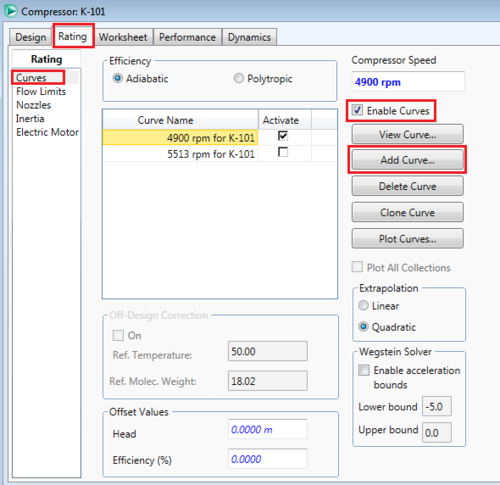 |

|
After setting the compressor speed to 4900 rpm (as seen in the top right of the figure to the left, above), the inlet stream can be specified. In this example, set the temperature to 110 C, the pressure to 100 kPa, the std. ideal liq flow to 9 m3/h, and the composition of the stream to 100 water. After specifying the stream, the compressor will have enough information to converge without specifying any outlet stream conditions. This is because the performance curve relates the flow rate to the possible pressure change, and combined with information such as adiabatic pump efficiency, HYSYS can calculate any changes the pump has on the inlet stream. This type of specification is useful when you know what compressor will be used in the process design, as more accurate utility costs can be calculated.
Once data for the performance curves are input, they can also be viewed by clicking "plot curves". This can be convenient to ensure the operating point of the pump falls where the modeler wants it because the operating point of the pump is also placed on the same plot. The figure below shows the compressor curve with an additional performance curve added. The large red dot is the operating point, and it falls on the red 4900 rpm performance curve because this rpm was specified for the pump.
It is also possible to plot a surge curve on the same plot to easily ensure operation above the surge line. To do so, click on the flow limits page under the rating tab within the compressor and click the surge curve button, then input whatever data fits the surge curve for the pump.
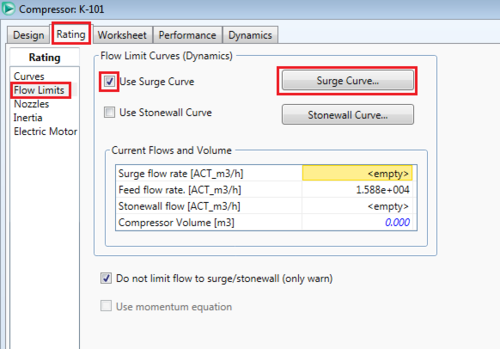 |

|
The resulting plot makes it easy to see whether or not an operating point is above the surge line in order to ensure blowback does not occur.
We can see the operating point is to the right of the surge curve, so blowback should not be a problem for these specifications. The resulting outlet stream conditions for these specifications should be 154.7 C, and 145.7 kPa.
Modeling Other Pressure Changers
When modeling valves in HYSYS, they also require an inlet and outlet stream, the same as pumps and compressors, but do not require a duty stream. For steady state simulation, as long as a pressure drop is specified along in some form, the valve should converge. This can be done by specifying inlet and outlet pressures (and other conditions required for stream convergence), or by specifying the pressure drop across the valve and the inlet or outlet pressure, although inlet pressure is preferred in most cases because then HYSYS does not need to try and backward solve for the inlet pressure in complicated systems.
Even piping itself can change the pressure of a stream due to viscous losses. When modeling a process, it is often best to initially estimate this based on pipe length and any fittings the piping will need, by using relations that can be found in the table below in equations found in Pressure Drop in Pipes, taken from Towler. [1] When final instrumentation drawings are completed for the process, ore rigorous hydraulic calculations should be completed to ensure there is enough pressure head throughout the process.
Summary
When modeling pressure changers with computer software, it is important to not over-specify them, as for any other piece of equipment. Failing to include them in the final process simulation may lead to odd results, such as a negative pressure drop through a heater or cooler in order to meet pressure or temperature specifications on a material stream. Should this situation occur, a pump or compressor should be added to ensure that a physically possible pressure drop takes place in the processing equipment. Pumps and compressors will use electricity to perform their pressure changes, and if many pumps or a large compressor is used in the process, this can have impacts on the process economics, so it is important to model pressure changers when designing a chemical process. Estimates for piping and valves also need to be included in the simulation so that proper pressure heads are maintained throughout the process simulation.
References
- ^ a b c d G.P. Towler, R. Sinnott. Chemical Engineering Design: Principles, Practice and Economics of Plant and Process Design. Elsevier, 2012.
- ^ L.T. Biegler, I.E. Grossmann, A.W. Westerberg. Systematic Methods of Chemical Process Design. Prentice-Hall: Upper Saddle River, 1997.
- ^ a b YA Hussein. Pressure Changers. Available at http://www.just.edu.jo/~yahussain/files/Pressure%20Changers.pdf Accessed February 3, 2016
- ^ a b c d e f R.T. Turton, R.C. Bailie, W.B. Whiting, J.A. Shaeiwitz. Analysis, Synthesis, and Design of Chemical Processes. Prentice Hall: Upper Saddle River, 2003.
- ^ W.D. Seider, J.D. Seader, D.R. Lewin. Process Design Principles: Synthesis, Analysis, and Evaluation. Wiley: New York, 2004.
- ^ N. Brownrigg. Jump start: Compressor modeling in Aspen HYSYS® Dynamics. Aspen Tech, 2015. Available at http://www.aspentech.com/compressor_modeling_jump_start.pdf Accessed 2/21/2016













